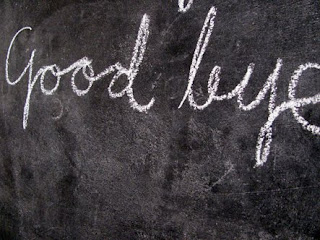
We are Laura Laakkonen and Mari Jarva, Finnish art therapy students from Queen Margaret University, Edinburgh. We have come to Tanzania for a month to volunteer at Bethsaida, also known as Olof Palme Orphans Education Centre. It is the only all-girls secondary boarding school in Tanzania devoted to educating and caring for orphans. Our aim here is to offer art workshops with a therapeutic approach, giving the girls an opportunity to explore their thoughts and feelings.
Sunday, 1 August 2010
30.07.2010
Even though the Art Club lasted only four weeks, it was hard to say good bye to the girls when leaving. Art making and interacting with the group of young Tanzanian orphan girls was incredible and offered us a valuable learning experience.
Information for exhibition guests
Art Club Exhibition at Bethsaida
July 28th 2010
This exhibition shows art works done by 58 Form II and III girls who live and study in Bethsaida. During the month of July, five groups of 15 to 18-year old girls participated weekly in an art workshop with a therapeutic approach. Art Club themes were chosen to encourage playful use of art materials and free expression of the participants´ thoughts and feelings around identity, self-image, dreams, and emotions. At the end of each session the drawings, sculptures, and written narratives, were shared and discussed in a group.
The workshops were led by Laura Laakkonen and Mari Jarva, 2nd year students of Art Psychotherapy (MSc) at Queen Margaret University Edinburgh, UK. Both workshop leaders have a background in visual arts and art education.
We would like to thank UN Spouse Group, Twigapapers and Transpaper for supporting the project.
29.07.2010
As planned, Art Club would end with a final exhibition. The Headmistress Maristella and Mama Christina agreed that the student exhibition could be arranged in the classroom where we met for the workshops. Donors, sponsors of our project, and other friends of Bethsaida were invited.
Before setting any works up the exhibition space needed a thorough cleaning. Mama Christina, Marie, Manu, Joyce and Joseph pleasantly surprised us by doing the massive chore while we were still enjoying our breakfast the day before the opening. However, preparing the show took us all day. Due to the huge amount of art works we were forced to choose only a part to be exhibited. Nevertheless, we made sure that each girl participated with at least two pieces, one sculpture and one drawing.
When everything was in place we were amazed to see the space, now entirely emptied of clutter and filled by the powerful art works created by the girls.
The following day, we had an opportunity to further experience the collection of pictures while waiting for the first guests to arrive. Although we only received a handful of guests (most likely due to the day and remote location of Bethsaida) we felt that the exhibition offered a meaningful experience for the girls who saw their art works hanging in a designated space, being looked at, and appreciated by others. Out of the whole exhibition, it seemed that the self-portraits carried a particular importance for the girls and evoked the most attention. A few girls came to us and expressed their disappointment when they did not find their self-portraits in the show. However, the young artists were eager to tell their peers and guests about their exhibited works and the experience of participating in the workshops.
27.07.2010
We have ended our work with all the Art Club groups and we will now review the last activity, a drawing with the theme: "How do you see yourself?" Many of the girls appeared to find making a self-portrait both extremely intriguing and challenging. It seemed to us as if the task of exploring the inner self by drawing increased the level of self-criticism in the group. The girls found it hard to begin with their images, often drew with very faint lines, and seemed to experience frustration when they could not erase their previous marks on the paper.
In the beginning of the session we made an effort to encourage the girls to express themselves in a free, playful manner and led a preparatory warm-up exercise with music. We also stressed that the self-portraits do not need to look realistic, "as you see yourself in a mirror".
The challenge of making a self-portrait was also reflected in the process of sharing the images. There were several girls who referred to the characters in their drawings as "my friend", "twin sister", or talked about them in third person. When we were discussing the art works together as a group, we tentatively asked these girls, whether they had started drawing themselves and then changed the character to be someone else. The answer was "yes". We were then told that the reason for changing the character to someone else was that "it is too difficult to draw myself." Nevertheless, all the girls were able to point out characteristics from their drawings, which closely related to themselves.
With all the five groups creating a narrative around the picture seemed to help the girls share their experience of themselves.









